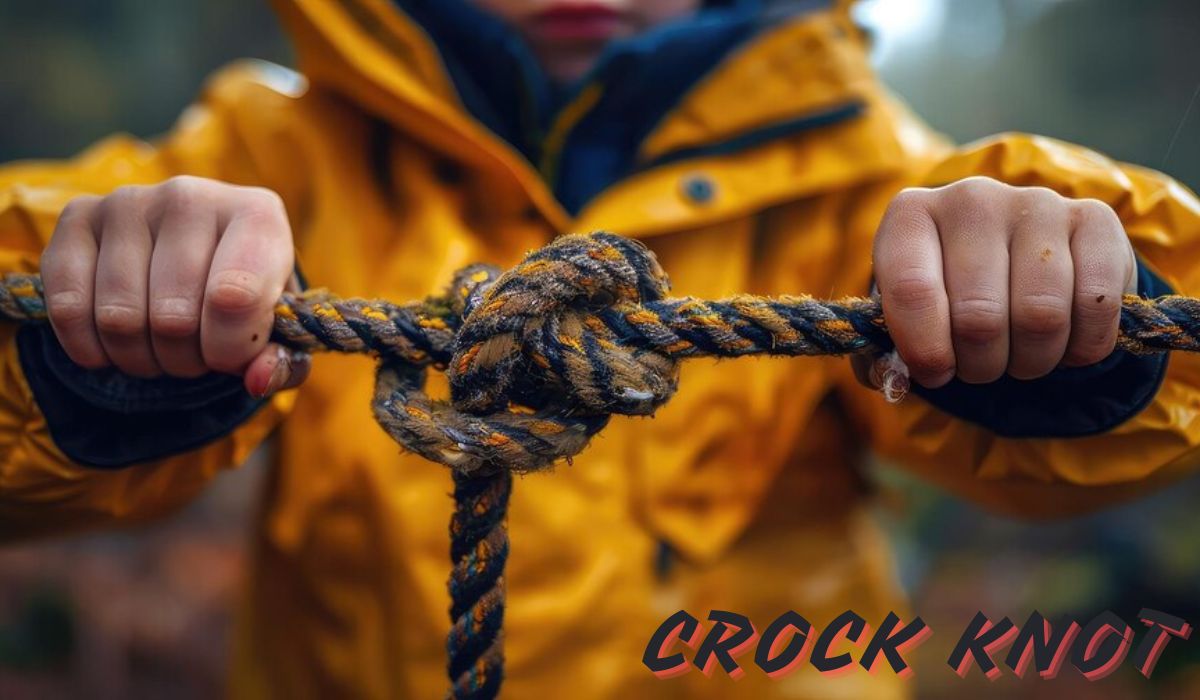GENERAL
Vy6ys: Unlocking the Infinite Potential of Flexibility

In the rapidly evolving landscape of the 21st century, adaptability and flexibility are paramount. Enter Vy6ys, a groundbreaking concept that embodies these qualities, offering limitless applications and interpretations. Whether in technology, business, education, or personal development, Vy6y’s serves as a catalyst for innovation and transformation. This article explores the origins, principles, and diverse applications of Vy6ys, demonstrating how this bendy concept can revolutionize various fields and inspire new ways of thinking.
The Origins and Meaning of Vy6ys
Defining Vy6ys
Vy6ys, pronounced “Vy-sis,” is a neologism that captures the essence of flexibility, adaptability, and boundless potential. It is derived from a blend of phonetic sounds intended to evoke notions of bending, twisting, and reshaping. Unlike rigid frameworks, Vy6y’s represents a dynamic, fluid approach to challenges and opportunities, making it highly relevant in today’s fast-paced world.
Historical Context
The concept of Vy6ys emerged from interdisciplinary research in fields such as cybernetics, systems theory, and design thinking. These disciplines emphasize the importance of adaptive systems, iterative processes, and holistic perspectives. Vy6y’s synthesizes these ideas into a cohesive framework that encourages constant evolution and reinvention.
Core Principles of Vy6ys
Flexibility
At its core, Vy6ys champions flexibility. This principle is about being open to change, able to pivot, and resilient in the face of uncertainty. Flexibility allows systems, organizations, and individuals to respond effectively to new information and changing circumstances.
Interdisciplinarity
Vy6y’s thrives on the integration of knowledge from various fields. By breaking down silos and encouraging cross-disciplinary collaboration, Vy6y’s fosters innovative solutions that are more robust and holistic.
Iteration
Iteration is a fundamental aspect of Vy6ys. This principle involves continuous refinement and improvement through cycles of testing, feedback, and adaptation. It is a process-oriented approach that values progress over perfection.
Holism
A holistic view is essential to Vy6ys. This means considering the whole system rather than isolated parts, understanding interdependencies, and addressing root causes rather than symptoms.
Applications of Vy6ys

Technology and Innovation
Agile Development
Vy6ys principles are deeply embedded in agile development methodologies. Agile focuses on iterative progress, flexibility, and cross-functional teamwork. Companies like Google and Spotify have successfully implemented agile frameworks, enabling them to innovate rapidly and respond to market changes.
Artificial Intelligence and Machine Learning
In AI and machine learning, Vy6ys is evident in the development of adaptive algorithms that learn and evolve over time. For example, self-driving car technology continuously processes data from the environment, adapting its behavior to ensure safety and efficiency.
Business and Management
Strategic Planning
Businesses can apply Vy6ys to strategic planning by adopting flexible strategies that allow for quick pivots. During the COVID-19 pandemic, companies like Zoom rapidly adapted their services to meet the surge in demand for remote communication, exemplifying Vy6y’s in action.
Organizational Culture
Cultivating a Vy6ys-driven culture means fostering an environment where adaptability and continuous learning are valued. Companies like Netflix promote a culture of freedom and responsibility, encouraging employees to innovate and adapt.
Education and Personal Development
Lifelong Learning
Vy6ys in education emphasizes the importance of lifelong learning and adaptability. Online platforms like Coursera and Khan Academy offer flexible learning opportunities that allow individuals to continuously update their skills.
Growth Mindset
Adopting a growth mindset, a concept popularized by psychologist Carol Dweck, aligns with Vy6y’s. It involves believing in the potential for growth and improvement through effort and perseverance.
Health and Wellness
Personalized Medicine
In healthcare, Vy6y’s principles can be seen in the rise of personalized medicine. Treatments are tailored to individual genetic profiles and lifestyles, allowing for more effective and adaptive healthcare solutions.
Mental Resilience
Vy6ys also applies to mental health, where resilience and adaptability are crucial. Practices like mindfulness and cognitive behavioral therapy (CBT) help individuals develop flexible thinking patterns to better cope with stress and adversity.
Case Studies of Vy6ys in Action
NASA’s Mars Rover Missions
NASA’s Mars Rover missions exemplify Vy6y’s. The rovers are designed to adapt to the unpredictable Martian environment. Through iterative design and interdisciplinary collaboration, NASA continuously improves its missions, learning from each iteration.
The Lean Startup Movement
The Lean Startup methodology, developed by Eric Ries, incorporates Vy6ys principles. It advocates for iterative product development, customer feedback, and pivoting based on new insights. Companies like Dropbox and Airbnb have used this approach to achieve rapid growth and success.
Disaster Response and Management
Vy6ys principles are crucial in disaster response. Organizations like the Federal Emergency Management Agency (FEMA) use adaptive strategies to respond to natural disasters. By continuously updating their plans based on real-time information, they can provide more effective assistance.
Challenges and Limitations of Vy6ys
Overcoming Resistance to Change
One of the main challenges of implementing Vy6ys is resistance to change. People and organizations often prefer stability and predictability. Overcoming this resistance requires strong leadership, clear communication, and a culture that values adaptability.
Balancing Flexibility and Stability
While flexibility is crucial, it must be balanced with stability. Too much flexibility can lead to chaos and lack of direction. Vy6ys requires finding the right balance to ensure that adaptability does not compromise core values and long-term goals.
Measuring Success
Measuring the success of Vy6y’s can be challenging due to its dynamic nature. Traditional metrics may not fully capture the value of flexibility and adaptability. Developing new metrics that reflect iterative progress and interdisciplinary impact is essential.
The Future of Vy6ys
Emerging Technologies
Emerging technologies like quantum computing, blockchain, and biotechnology will further expand the applications of Vy6ys. These technologies will require adaptive approaches to fully realize their potential and address their associated challenges.
Global Collaboration
The future of Vy6ys lies in global collaboration. Addressing complex issues like climate change, pandemics, and economic inequality requires adaptive, interdisciplinary solutions. This provides a framework for such collaboration, encouraging diverse perspectives and iterative problem-solving.
Personal Empowerment
Vy6y’s will continue to empower individuals to navigate an uncertain world. By embracing flexibility, interdisciplinary learning, and continuous improvement, people can adapt to changing circumstances and seize new opportunities.
Conclusion
Vy6ys is more than just a concept; it is a mindset and a framework for navigating complexity and uncertainty. Its principles of flexibility, interdisciplinarity, iteration, and holism offer valuable insights for a wide range of applications. From technology and business to education and personal development, Vy6y’s provides a path to innovation and resilience.
As we move forward into an increasingly interconnected and rapidly changing world, embracing Vy6y’s will be essential. By doing so, we can unlock infinite potential, transforming challenges into opportunities and creating a more adaptable, innovative, and resilient future.
GENERAL
Losing Something as a Blessing: Finding Growth and Gratitude in Loss

Loss is an inevitable part of life. Whether it’s losing a cherished possession, a job, a relationship, or even an opportunity, the experience of loss can be deeply painful and disorienting. However, as difficult as it may be, losing something often comes with unexpected benefits—lessons that can transform our lives for the better. The idea that “losing something as a blessing” may seem paradoxical at first, but when we delve deeper into the nature of loss and its impact on our personal growth, it becomes clear that loss can be a powerful catalyst for positive change.
In this article, we will explore how losing something can be a blessing in disguise. We’ll discuss the emotional journey that accompanies loss, the life lessons that emerge from it, and how adopting a mindset of gratitude and acceptance can turn loss into an opportunity for growth. Through examples, psychological insights, and practical strategies, we will uncover the hidden blessings that often accompany loss, providing a new perspective on this universal human experience.
Understanding the Emotional Journey of Loss
The Initial Impact of Loss
The first response to losing something important is often shock, disbelief, or denial. This initial stage of grief can be overwhelming, as we struggle to comprehend and accept the reality of what has happened. Whether the loss is material, such as a treasured object, or intangible, like the end of a relationship, the emotional impact can be profound.
During this stage, it is common to feel a sense of emptiness, as if a part of ourselves is missing. This feeling is not just psychological but can manifest physically, with symptoms such as fatigue, loss of appetite, and difficulty concentrating. The brain and body are processing the loss, and it takes time for the mind to adjust to the new reality.
Moving Through Grief and Acceptance
As the initial shock begins to wear off, feelings of sadness, anger, or frustration often surface. This is a natural part of the grieving process, as we begin to confront the emotions associated with our loss. It is important to allow ourselves to experience these emotions fully rather than suppressing or denying them.
Over time, as we work through these feelings, we begin to reach a stage of acceptance. This does not mean that the pain of loss disappears, but rather that we come to terms with it and find a way to move forward. Acceptance allows us to start seeing the situation from a different perspective, opening the door to recognizing the potential blessings hidden within the loss.
You may also like: The Grand Duke is Mine Spoilers Twists and Turns in Love and Royalty
The Hidden Blessings in Loss
Lessons in Detachment and Letting Go
One of the most significant blessings that can come from loss is the lesson of detachment. Often, we become attached to our possessions, relationships, and even our identities, believing that they define who we are. When we lose something we hold dear, we are forced to confront these attachments and reevaluate our sense of self.
Detachment does not mean indifference or a lack of caring. Instead, it involves recognizing that our worth and happiness are not solely dependent on external factors. Losing something allows us to practice letting go, freeing ourselves from the need to control or cling to things that are ultimately impermanent. This can lead to a greater sense of inner peace and resilience, as we learn to navigate life with a lighter heart and a more open mind.
Example: A Lost Job Leading to New Opportunities
Consider the example of someone who loses their job unexpectedly. At first, the loss can feel devastating, triggering fears about financial stability, self-worth, and the future. However, as they move through the initial stages of grief and begin to accept their situation, they may start to see new opportunities that were previously obscured by the security of their old job.
Perhaps the loss of the job encourages them to pursue a passion they had set aside, leading to a more fulfilling career. Or maybe it pushes them to develop new skills, network with different people, or explore alternative industries. In this way, what initially seemed like a misfortune can ultimately become a catalyst for personal and professional growth.
Gaining Clarity and Perspective
Another blessing that can emerge from loss is the clarity and perspective it provides. When we lose something, we are often compelled to take a step back and reassess our priorities, values, and goals. This process of reflection can lead to important realizations about what truly matters to us, helping us align our lives more closely with our core values.
Loss can strip away the distractions and superficial concerns that may have been occupying our attention, allowing us to focus on what is truly meaningful. It can also help us appreciate what we still have, fostering a deeper sense of gratitude and contentment.
Example: The End of a Relationship Bringing Personal Growth
The end of a significant relationship, whether through a breakup, divorce, or estrangement, is often one of the most painful types of loss. However, this loss can also be a powerful teacher. It can prompt us to examine our behavior, communication patterns, and emotional needs, leading to greater self-awareness and personal growth.
For example, after the end of a long-term relationship, a person might realize that they had been compromising their own needs or values to maintain the partnership. This realization can inspire them to establish healthier boundaries in future relationships and to prioritize their own well-being. Additionally, the experience of loss can deepen their empathy and understanding, making them more compassionate and supportive of others going through similar challenges.
Building Resilience and Inner Strength
Experiencing loss and learning to navigate its challenges can significantly enhance our resilience and inner strength. Each time we face and overcome a loss, we build our capacity to handle future difficulties with greater confidence and grace. This resilience is not about becoming immune to pain but rather about developing the ability to recover and grow from it.
Resilience is a key factor in emotional and psychological well-being. It helps us maintain a positive outlook even in the face of adversity, and it enables us to adapt to changing circumstances. By seeing loss as an opportunity to strengthen our resilience, we can approach life’s challenges with a more empowered and proactive mindset.
Example: Losing a Possession Teaching Gratitude
Imagine losing a valuable possession, such as an heirloom or a prized piece of jewelry. The initial feelings of frustration and sadness are natural, but over time, this loss can teach us to appreciate the impermanent nature of material things. It can also remind us to be grateful for what we still have—memories, relationships, and experiences that no loss can take away.
This shift in perspective can lead to a deeper sense of gratitude for the non-material aspects of life, such as love, health, and personal growth. It can also encourage us to simplify our lives, focusing less on accumulating possessions and more on cultivating meaningful connections and experiences.
Fostering Compassion and Empathy
Loss has a unique way of connecting us to the shared human experience. When we go through loss, we become more attuned to the suffering of others, fostering a greater sense of compassion and empathy. This increased empathy can lead to stronger relationships, as we become more understanding and supportive of those around us.
Additionally, experiencing loss can inspire us to contribute positively to our communities, whether through volunteering, offering support to others in need, or simply being more present and attentive in our relationships. In this way, the blessing of loss extends beyond our personal growth, enriching the lives of those around us.
Example: Loss Leading to Community Support
Consider someone who has lost their home to a natural disaster. This type of loss is undeniably traumatic, but it can also lead to an outpouring of support from the community. In the aftermath, the individual might find themselves surrounded by kindness and generosity from neighbors, friends, and even strangers.
This experience of communal support can deepen their sense of belonging and connectedness, showing them that they are not alone in their struggles. It can also inspire them to give back, becoming a source of support for others who face similar challenges in the future.
Strategies for Embracing Loss as a Blessing
Cultivating Mindfulness and Acceptance
One of the most effective ways to embrace loss as a blessing is to cultivate mindfulness and acceptance. Mindfulness involves staying present with our emotions and experiences without judgment, allowing us to fully process and understand the impact of loss. Acceptance, on the other hand, involves letting go of the need to control or change what has already happened, and instead, finding peace with the present moment.
Practicing mindfulness and acceptance can help us move through the stages of grief with greater ease, opening us up to the potential blessings that loss can bring. Techniques such as meditation, journaling, and mindful breathing can support this process, helping us stay grounded and centered as we navigate the complexities of loss.
Reframing Loss as an Opportunity
Reframing is a powerful psychological tool that involves changing the way we perceive a situation. By reframing loss as an opportunity for growth, learning, and transformation, we can shift our mindset from one of despair to one of hope and possibility.
This does not mean denying the pain of loss but rather recognizing that it can coexist with positive outcomes. For example, losing a job might be reframed as an opportunity to explore new career paths, develop new skills, or even start a business. By focusing on the opportunities that loss presents, we can approach it with a more optimistic and proactive attitude.
Practicing Gratitude
Gratitude is a transformative practice that can help us see the blessings in any situation, including loss. By consciously focusing on what we are grateful for, we can counterbalance the negative emotions associated with loss and cultivate a more positive outlook.
Gratitude journaling, where we regularly write down things we are thankful for, is a simple yet effective way to integrate this practice into our lives. Even in the midst of loss, there are always aspects of life that we can appreciate, whether it’s the support of loved ones, the beauty of nature, or the lessons we are learning.
Seeking Support and Connection
Loss can be an isolating experience, but it is important to remember that we do not have to go through it alone. Seeking support from friends, family, or a therapist can provide us with the emotional resources we need to navigate loss with resilience and grace.
Connecting with others who have experienced similar losses can also be incredibly healing. Support groups, online communities, and social networks can offer a space to share our stories, receive validation, and gain new perspectives on our experiences. By reaching out and building connections, we can find strength in our shared humanity.
Conclusion:
Losing something important can be losing something as a blessing or can be one of the most challenging experiences we face in life. Yet, within every loss lies the potential for growth, transformation, and unexpected blessings. By embracing loss with an open heart and a willingness to learn, we can discover new strengths, deepen our understanding of ourselves and others, and find greater meaning and purpose in our lives.
The concept of “losing something as a blessing” invites us to look beyond the surface of our losses and recognize the profound opportunities they offer. Whether it is the lesson of detachment, the clarity of perspective, the development of resilience, or the cultivation of compassion, loss has the power to shape us in ways that ultimately enrich our lives.
As we move through the inevitable losses that life brings, let us remember that each loss carries with it the seeds of new beginnings. By nurturing these seeds with mindfulness, gratitude, and connection, we can transform loss into a powerful force for personal and collective growth, turning what once seemed like a setback into a blessing in disguise.
GENERAL
Flea Snake: A Comprehensive Exploration of a Lesser-Known Reptile

The animal kingdom is full of fascinating and mysterious creatures, many of which remain relatively unknown to the general public. Among these lesser-known species is the “flea snake,” a name that might evoke curiosity and intrigue. Unlike well-known snakes such as cobras or pythons, the flea snake is a rare and enigmatic species with unique characteristics that set it apart from its reptilian relatives.
This article delves into the world of flea snakes, exploring their biology, habitat, behavior, and the ecological role they play. We’ll also address common misconceptions and provide insights into the conservation efforts aimed at preserving these elusive creatures. Whether you’re a herpetology enthusiast or simply curious about the natural world, this in-depth exploration of the flea snake will offer valuable knowledge and a new appreciation for this remarkable species.
Understanding the Flea Snake: An Overview
What is a Flea Snake?
The term “flea snake” is not widely recognized in mainstream zoology and may refer to a specific species within a lesser-known group of snakes. In some cases, “flea snake” might be a colloquial or regional name for a particular species or genus. Therefore, understanding the flea snake requires careful consideration of the context in which the term is used.
One possible reference is to certain small, elusive snakes that are rarely seen and have a reputation for being difficult to study, much like fleas are small and hard to catch. Alternatively, the term might be associated with snakes that exhibit unique behaviors or have specific ecological niches that distinguish them from other snake species.
Taxonomy and Classification
Given the ambiguous nature of the term “flea snake,” it’s essential to explore the potential species that could be associated with this name. Some herpetologists suggest that the term might refer to certain members of the Colubridae family, which is the largest snake family, comprising over 1,800 species. Colubrids are known for their diversity in size, habitat, and behavior, making them a likely candidate for the flea snake designation.
Another possibility is that “flea snake” refers to a species within the Uropeltidae family, commonly known as shield-tailed snakes. These burrowing snakes are native to India and Sri Lanka and are characterized by their small size, cylindrical bodies, and distinctive tail shields. Their elusive nature and underground lifestyle might contribute to the “flea” analogy.
Key Characteristics
While the exact identity of the flea snake may vary, certain general characteristics can be associated with snakes that might fall under this category:
- Small Size: Flea snakes are likely to be small, with some species reaching only a few inches in length. This small size contributes to their elusive nature.
- Elusive Behavior: Flea snakes are often difficult to spot, either because they are nocturnal, burrowing, or inhabit areas that are challenging to access.
- Specialized Habitat: These snakes may be adapted to specific environments, such as underground burrows, leaf litter, or dense vegetation, where they can remain hidden from predators and humans.
- Unique Morphological Features: Depending on the species, flea snakes might have distinctive physical features, such as specialized scales, tail structures, or coloration that aid in their survival in specific habitats.
Habitat and Distribution of Flea Snakes
Geographical Range
The geographical distribution of flea snakes likely varies depending on the specific species referred to by this name. However, snakes that fit the description of flea snakes are typically found in tropical and subtropical regions, where they can thrive in warm, humid environments.
For example, if flea snakes are indeed related to the Uropeltidae family, they would primarily be found in the Western Ghats of India and parts of Sri Lanka. These regions are known for their rich biodiversity and complex ecosystems, which provide ideal habitats for small, burrowing snakes.
Preferred Habitats
Flea snakes are likely to inhabit environments that offer plenty of cover and protection from predators. Common habitats might include:
- Forest Floors: Dense leaf litter and undergrowth in forests provide excellent camouflage and hunting grounds for small snakes. Flea snakes might be particularly adept at navigating these environments to find prey and avoid detection.
- Burrows and Underground Tunnels: Many small snakes, including those that might be considered flea snakes, are fossorial, meaning they spend much of their lives underground. These snakes are well-adapted to burrowing and may create or inhabit tunnels in the soil.
- Moist, Humid Areas: Flea snakes may prefer environments with high humidity, such as tropical rainforests, wetlands, or riverbanks. The moisture helps maintain their skin and supports the prey species they rely on for food.
Ecological Role
Despite their small size and elusive nature, flea snakes play a vital role in their ecosystems. As predators, they help control populations of insects, small invertebrates, and other prey species, contributing to the balance of the food web. Additionally, by being prey for larger animals, flea snakes are an integral part of the ecological cycle, supporting biodiversity in their habitats.
Behavior and Diet of Flea Snakes
Feeding Habits
Flea snakes are likely to have a diet that consists primarily of small invertebrates, such as insects, worms, and larvae. Their feeding habits may vary depending on the specific species and habitat, but they are generally considered opportunistic feeders, taking advantage of whatever prey is available in their environment.
- Insectivorous Diet: Many small snakes, including potential flea snake candidates, are insectivorous, feeding on ants, termites, beetles, and other small arthropods. Their small size and agility allow them to capture these tiny prey items with precision.
- Earthworms and Other Soft-Bodied Invertebrates: For burrowing species, earthworms and other soil-dwelling invertebrates may constitute a significant portion of their diet. These prey items are easy to capture and provide the necessary nutrients for the snake’s survival.
Reproductive Behavior
The reproductive behavior of flea snakes, like their other behaviors, is likely adapted to their specific environmental conditions. Small snakes often have unique reproductive strategies that maximize their chances of survival in challenging habitats.
- Oviparous vs. Viviparous: Depending on the species, flea snakes may be either oviparous (egg-laying) or viviparous (giving birth to live young). Oviparous species typically lay their eggs in secure, hidden locations, such as underground burrows or under rocks. Viviparous species give birth to live young, which are often fully developed and ready to survive on their own from birth.
- Breeding Season: The breeding season for flea snakes may coincide with periods of abundant food and favorable environmental conditions, such as the rainy season in tropical regions. This timing ensures that the young have the best chance of survival.
- Parental Care: In many small snake species, parental care is minimal, with the young being left to fend for themselves shortly after birth or hatching. However, some species may exhibit behaviors such as guarding eggs or providing some level of protection for their offspring during the early stages of life.
Defensive Behavior
Given their small size and vulnerability, flea snakes are likely to have developed various defensive strategies to protect themselves from predators. These behaviors may include:
- Camouflage: Flea snakes may rely heavily on camouflage to avoid detection. Their coloration and patterns might blend seamlessly with their surroundings, making them nearly invisible to both predators and humans.
- Burrowing: As mentioned earlier, many flea snakes are fossorial and spend much of their time underground. Burrowing not only provides access to prey but also offers protection from predators and extreme weather conditions.
- Quick Escapes: Flea snakes may be exceptionally fast and agile, allowing them to make quick escapes into burrows, crevices, or dense vegetation when threatened.
Conservation Status and Threats to Flea Snakes
Current Conservation Status
The conservation status of flea snakes is difficult to determine due to the ambiguity surrounding the term and the lack of comprehensive studies on the species it may refer to. However, many small, specialized snakes are at risk due to habitat loss, environmental degradation, and other human activities.
Threats to Flea Snakes
- Habitat Destruction: The primary threat to flea snakes is likely habitat destruction, particularly in tropical and subtropical regions where deforestation and land development are rampant. The loss of forests, wetlands, and other natural habitats can severely impact snake populations, reducing their available habitat and food sources.
- Pollution: Environmental pollution, including pesticide use, chemical runoff, and plastic waste, can also pose significant threats to flea snakes. These pollutants can contaminate the soil, water, and prey species, leading to health problems and reduced survival rates for snakes.
- Climate Change: Climate change may have profound effects on the habitats and ecosystems that flea snakes depend on. Changes in temperature, precipitation patterns, and extreme weather events can alter the availability of food, disrupt breeding cycles, and increase the risk of habitat loss.
- Human Persecution: Like many snakes, flea snakes may be subject to persecution due to fear or misunderstanding. In some cultures, snakes are killed on sight, regardless of whether they pose a threat to humans. This indiscriminate killing can lead to population declines, particularly for species that are already rare or vulnerable.
Conservation Efforts
To protect flea snakes and other small, lesser-known snake species, several conservation strategies can be implemented:
- Habitat Protection: Protecting and preserving natural habitats is crucial for the survival of flea snakes. This can be achieved through the establishment of protected areas, such as national parks and wildlife reserves, as well as the promotion of sustainable land-use practices in surrounding regions.
- Research and Monitoring: More research is needed to better understand the biology, ecology, and conservation needs of flea snakes. By studying these snakes in their natural habitats, scientists can gather valuable data that can inform conservation strategies and help protect these species from extinction.
- Public Education and Awareness: Educating the public about the importance of flea snakes and their role in the ecosystem can help reduce fear and misunderstanding. Conservation organizations can work to raise awareness about the threats facing these snakes and encourage people to coexist peacefully with them.
- Legal Protection: Implementing and enforcing legal protections for flea snakes and their habitats is essential for their long-term survival. This may include regulations on land use, wildlife trade, and the use of harmful chemicals that can affect snake populations.
The Fascination with Flea Snakes: Cultural and Scientific Perspectives
Cultural Significance
In some cultures, snakes hold significant symbolic and spiritual meanings. While the flea snake itself may not have a widespread cultural presence, snakes in general are often associated with various myths, legends, and religious beliefs. In some cultures, small, elusive snakes might be considered symbols of mystery, transformation, or resilience.
Scientific Interest
For herpetologists and biologists, flea snakes represent an intriguing subject of study. Their elusive nature, specialized habitats, and unique behaviors offer valuable insights into the diversity of life on Earth and the complex relationships between species and their environments. Studying flea snakes can also contribute to broader understanding of snake evolution, adaptation, and conservation.
The Future of Flea Snake Research
As scientific interest in lesser-known species grows, flea snakes may become the focus of more in-depth research efforts. Advances in technology, such as remote sensing, genetic analysis, and ecological modeling, can help researchers overcome the challenges of studying these elusive snakes in their natural habitats. Additionally, collaborations between scientists, conservationists, and local communities can lead to more effective conservation strategies and a deeper appreciation for the importance of preserving biodiversity.
Conclusion:
The flea snake, while not as well-known as some of its reptilian counterparts, is a fascinating and important member of the animal kingdom. Whether it refers to a specific species or a group of small, elusive snakes, the flea snake embodies the mystery and complexity of the natural world. By exploring its biology, behavior, and conservation, we gain a greater understanding of the delicate balance that exists within ecosystems and the need to protect even the most obscure species.
As we continue to learn more about flea snakes and other lesser-known animals, we are reminded of the richness and diversity of life on Earth. Each species, no matter how small or elusive, plays a crucial role in the web of life, contributing to the health and resilience of ecosystems. By valuing and protecting these creatures, we ensure a future where the wonders of the natural world continue to inspire and sustain us.
GENERAL
Crock Knot: A Symbol of Fortitude and Durability

Introduction
In a world where symbolism often conveys profound meanings, the “Crock Knot” stands as a testament to strength, resilience, and endurance. This symbolic knot, though not as widely known as other iconic symbols, holds a significant place in the annals of history and culture, representing the unbreakable spirit of those who have mastered it. The Crock Knot, with its rich history, embodies the essence of fortitude and durability, making it a powerful metaphor for overcoming challenges and enduring through the toughest of times.
Understanding the Crock Knot: Origins and Symbolism
The Origins of the Crock Knot
The CrockKnot traces its origins to ancient times, where knots were more than just practical tools; they were symbols, carrying deep meanings and serving various purposes across cultures. The exact origin of the CrockKnot is shrouded in mystery, with some suggesting that it was first used by sailors and craftsmen who needed a reliable and robust knot that could withstand the harshest conditions. Others believe that it may have originated in the context of survival, where tying a secure knot could mean the difference between life and death.
Regardless of its precise beginnings, the Crock-Knot has come to represent more than just a method of securing objects. It is a symbol of resilience, a reminder that even in the face of adversity, one can remain strong and steadfast.
The Symbolism of the Crock Knot
The Crock Knot is not just a physical entity but also a powerful metaphor for life. Its design, which involves intertwining loops that hold firm under pressure, symbolizes the interconnectedness of strength and perseverance. Just as the knot remains unyielding when pulled, individuals can draw on their inner strength to withstand challenges and obstacles.
In many cultures, knots are used to represent unity, commitment, and eternity. The CrockKnot, in particular, is seen as a symbol of unbreakable bonds—whether it be between people, ideas, or commitments. This knot serves as a reminder that true strength comes not from being rigid but from being able to endure, adapt, and remain resilient.
The Crock Knot in History: A Testament to Endurance
The Crock Knot in Ancient Civilizations
Throughout history, various civilizations have utilized knots for both practical and symbolic purposes. In ancient Egypt, knots were often depicted in hieroglyphics and used in amulets for protection and strength. Similarly, in Celtic culture, intricate knotwork was a prevalent motif, representing the eternal cycle of life and the interconnectedness of all things.
While the CrockKnot itself may not be explicitly mentioned in historical records, its essence can be found in the use of knots across these cultures. The importance of a strong, reliable knot was paramount, especially in seafaring societies where the integrity of a knot could determine the success of a voyage.
The Crock Knot in Maritime Tradition
Maritime history is rich with references to knots, each serving a specific function on ships. The Crock Knot, believed to be a variation of more common maritime knots like the bowline or the clove hitch, was prized for its ability to hold fast under duress. Sailors depended on such knots to secure sails, anchor lines, and cargo, trusting that these knots would not fail them in the midst of a storm.
The Crock Knot’s reputation for durability made it a preferred choice among sailors who navigated treacherous waters. Its ability to remain tight and secure, even when subjected to intense pressure, mirrored the sailors’ own need for resilience in the face of unpredictable and often dangerous conditions at sea.
The Crock Knot in Modern Context: A Metaphor for Resilience
The Crock Knot in Survival and Outdoor Adventures
In the modern world, the Crock Knot continues to hold relevance, particularly in the context of survival and outdoor activities. Survivalists and outdoor enthusiasts often rely on a repertoire of knots for various purposes, from setting up shelters to securing gear. The Crock Knot, with its dependable strength, is a valuable tool in these situations.
For example, in a survival scenario, being able to tie a secure knot quickly can be crucial. Whether it’s to hoist food away from predators, create a makeshift harness, or secure a tarp, the Crock Knot’s reliability makes it an essential skill for anyone venturing into the wilderness.
The knot’s design allows it to be tied and untied easily, yet it remains incredibly strong when under tension. This combination of durability and adaptability makes it a perfect metaphor for resilience in the face of life’s challenges. Just as the Crock Knot holds firm under pressure, individuals can learn to harness their inner strength to persevere through difficult times.
The Crock Knot in Psychological Resilience
Beyond its practical applications, the Crock-Knot serves as a powerful metaphor in the field of psychology, particularly in discussions about resilience. Resilience is the ability to bounce back from adversity, to withstand stress, and to thrive despite challenges. The Crock-Knot symbolizes this kind of psychological resilience.
When we think about resilience, we often imagine someone who can “hold it together” in tough situations—much like the Crock-Knot. The knot does not fray or come undone easily; it withstands the forces that try to pull it apart. Similarly, resilient individuals are those who can maintain their composure, adapt to changing circumstances, and continue moving forward even when faced with significant obstacles.
This metaphor can be particularly powerful in therapy and counseling, where individuals are often encouraged to develop their own “Crock Knot” of resilience—strategies and coping mechanisms that allow them to remain strong in the face of life’s challenges.
The Crock Knot in Craftsmanship: An Embodiment of Skill and Precision
The Art of Knot-Tying
Knot-tying is an ancient craft that requires both skill and precision. Over the centuries, this art form has been honed by sailors, climbers, and craftsmen, each of whom has contributed to the rich tapestry of knots that we know today. The Crock Knot, with its emphasis on strength and durability, is a testament to the craftsmanship involved in knot-tying.
Learning to tie a Crock Knot involves understanding the mechanics of tension, friction, and load-bearing capacity. It’s not just about following a set of instructions; it’s about mastering the principles that allow the knot to function as intended. This makes the Crock Knot an embodiment of both art and science, where skill and knowledge come together to create something reliable and enduring.
The Crock Knot in Modern Craftsmanship
In today’s world, where mass production often overshadows traditional craftsmanship, the Crock Knot represents a return to quality and durability. It is a reminder that true craftsmanship involves creating something that stands the test of time, whether it’s a piece of furniture, a garment, or a knot.
For artisans and craftsmen, the Crock Knot serves as a symbol of the pride and dedication that goes into their work. It is a metaphor for the care and attention to detail required to produce something of lasting value. In this way, the CrockKnot continues to inspire modern craftsmen to prioritize quality and durability in their work.
The Crock Knot in Popular Culture: A Symbol of Strength
The Crock Knot in Literature and Film
The symbolic nature of the CrockKnot has made its way into literature and film, where it often represents the strength and resilience of characters. Whether it’s a protagonist who ties a Crock Knot to secure their lifeline or a metaphorical use of the knot to symbolize the unbreakable bond between characters, the CrockKnot serves as a powerful narrative device.
In literature, knots are often used to symbolize the complexities of relationships, the binding nature of promises, or the challenges that characters must navigate. The CrockKnot, with its reputation for strength and durability, is particularly well-suited for stories that explore themes of resilience, perseverance, and unyielding determination.
The Crock Knot in Visual Art
In visual art, the CrockKnot can be seen as a symbol of the artist’s own resilience and dedication to their craft. Artists who depict knots in their work may be drawn to the Crock Knot for its intricate design and the strength it represents. Whether it’s in sculpture, painting, or digital art, the CrockKnot serves as a visual metaphor for the unbreakable bonds that connect us to each other and to our own inner strength.
How to Tie a Crock Knot: A Practical Guide
For those inspired by the symbolism and history of the CrockKnot, learning to tie it can be a rewarding experience. Below is a step-by-step guide on how to tie a basic Crock Knot:
- Start with a Length of Rope: Begin with a suitable length of rope, depending on the size and purpose of the knot. A sturdy, flexible rope works best.
- Form a Loop: Take the working end of the rope and form a loop, ensuring that the loop is large enough for the intended use.
- Cross the Ends: Cross the working end over the standing end of the rope, creating a simple overhand loop.
- Create a Second Loop: Form a second loop by doubling the rope back on itself, making sure that the second loop lies next to the first.
- Thread the Working End: Take the working end of the rope and thread it through both loops, pulling it tight to secure the knot.
- Tighten the Knot: Pull on both ends of the rope to tighten the knot, ensuring that the loops remain even and that the knot is secure.
- Test the Knot: Before relying on the Crock Knot, test its strength by applying pressure to ensure it holds firm.
The Future of the Crock Knot: A Symbol for a New Generation
As we move further into the 21st century, the CrockKnot continues to serve as a symbol of resilience, adaptability, and strength. In a world that often feels uncertain and unstable, the Crock Knot reminds us that we, too, can remain unbroken, no matter what challenges we face.
The Crock Knot in the Digital Age
In the digital age, the symbolism of the CrocKnot has found new relevance. As we navigate the complexities of the modern world—where information overload, rapid change, and global challenges are the norm—the CrockKnot stands as a metaphor for the need to stay grounded, connected, and resilient.
Just as the Crock Knot binds securely in the physical world, so too does it represent the strength and durability of our connections in the digital realm. Whether it’s maintaining relationships, upholding commitments, or staying true to our values, the CrockKnot reminds us that we can endure and thrive, even in the most trying circumstances.
Conclusion
The CrockKnot is more than just a knot; it is a symbol of fortitude, durability, and resilience. Its rich history, spanning ancient civilizations, maritime traditions, and modern craftsmanship, speaks to its enduring relevance and power. As a metaphor for strength, the CrockKnot continues to inspire and resonate with those who seek to remain steadfast in the face of adversity.
Whether used in practical applications, psychological resilience, or artistic expression, the CrockKnot embodies the unbreakable spirit that lies within each of us. It reminds us that, like the knot itself, we can withstand pressure, hold firm, and emerge stronger on the other side. As we look to the future, the Crock-Knot remains a timeless symbol of what it means to be resilient, adaptable, and, above all, enduring.
-

 TECHNOLOGY3 weeks ago
TECHNOLOGY3 weeks agoBoltból: Revolutionizing Device Efficiency and Connectivity
-

 BUSINESS3 weeks ago
BUSINESS3 weeks agoCrypto30x: Mastering Profit-Taking Strategies in the Crypto Market
-

 GENERAL2 weeks ago
GENERAL2 weeks agoSimpCiry: Revolutionizing Urban Living through Smart City Innovation
-

 EDUCATION1 week ago
EDUCATION1 week agoCruciais: The Power of Crucial Questioning in a World of Information Overload
-

 EDUCATION2 weeks ago
EDUCATION2 weeks agoGeometry Spot: Master Geometry with Engaging Tools and Professional Approaches
-

 HEALTH3 weeks ago
HEALTH3 weeks agoOridzin: A Powerful Antioxidant for Youthful Cells
-

 ENTERTAINMENT3 weeks ago
ENTERTAINMENT3 weeks agoI’m Being Raised by Villains-Chapter 36: A Deep Dive into the Chaotic World
-

 ENTERTAINMENT3 weeks ago
ENTERTAINMENT3 weeks agoBook32: Unveiling a New Chapter in Reading
